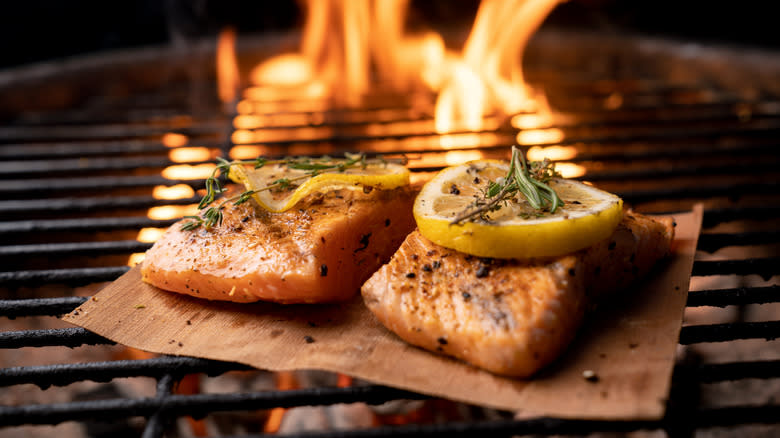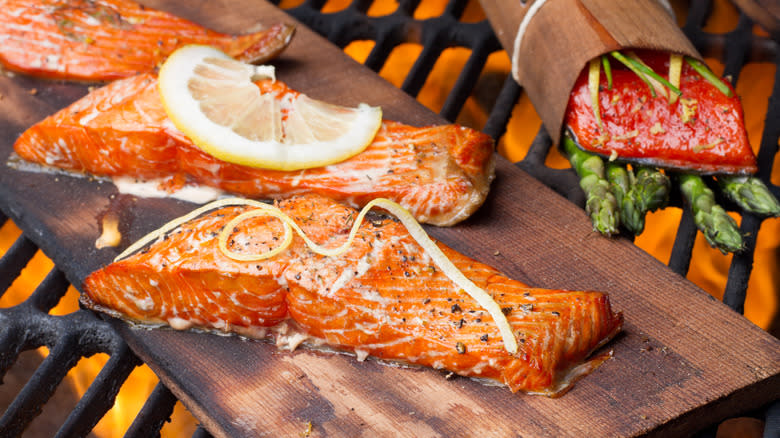Why Placement Matters When Grilling Salmon

No matter the season or iteration, we simply can't get enough salmon. Yet there's something about the warmer months that makes us savor it a little more ... with an abundance of sunny days to fire up the grill, and the flames kissing salmon with a smoky flavor to complement its butteriness. Don't let those flames get too close, though — when grilling salmon, make sure it's placed in indirect heat.
If you're roasting salmon in the air fryer or searing it in a hot pan, you want every inch of the filet to get a taste of the heat. Grilling, on the other hand, deals with higher temperatures. The fish has a very delicate composition, and can easily overcook or burn with that level of heat, so place your filet on one side of the grill, away from the fire. You can turn the indirect zone down to the lowest heat possible, or simply leave that section off.
With multiple burners on the grill, place the filets in the middle while turning on the ones on opposite ends. Whether or not you close the grill lid depends on how you want the filet to end up. For grilled salmon, watercress, and pea salad, having a crisp surface with a tender exterior that flakes apart easily is best. For this, keep the lid of the grill open to allow heat out. To get a well done filet, close the lid to stimulate the flow of hot air, resulting in thoroughly cooked fish.
Read more: 15 Different Ways To Cook Fish
Follow These Tips The Next Time You Grill Salmon

To keep the fish intact, there's a flipping mistake you need to avoid. Although metal fish spatulas were designed for seafood, they're too bulky to wiggle into the grates and pick up the salmon. Instead, use a fork to gently lift the filet without it sticking and tearing at the skin, which causes the fish to flake before it even reaches a plate.
In order to make sure you can even lift the salmon off the grates, though, the grill needs a slippery surface. There's nothing worse than salmon separating from its skin as it's being carried up. Before you start cooking, thoroughly clean your grill, and then use a paper towel to spread canola or sunflower oil over the grates. For extra protection, rub down the skin of the salmon with oil as well.
The grill then needs to be preheated before you place your salmon onto it. This prep step creates a hot surface for your food to go onto, further preventing sticking. It also promotes even cooking for the filets, so they won't be simultaneously over-cooked on the outside and raw on the inside. Fire up each burner before closing the grill for around 15 minutes. Once the time's up, turn off the burners within the indirect heat zone and place the salmon there.
Read the original article on Tasting Table

